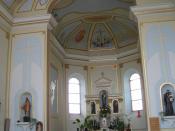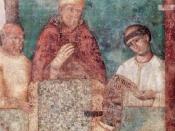When we think of The Middle Ages we think of knights in shining armor, banquets, kings, and queens. To many people, medieval life seems heroic, entertaining, and romantic. In reality, life in the Middle Ages, a period that extended from approximately the fifth century to the fifteenth century in Western Europe, was sometimes all these things, as well as harsh, uncertain, and often dangerous. The crusades were a time of confusion for most people, yet today we look back at them as a turning point. The Black Death swept the country infecting many people leading them to death. The Hundred Year's War brought warfare throughout the people and their country. The medieval church's decline began when Boniface VIII became pope. Many traits can lead back to the collapse of an old civilization and separated it from the appearance of a new one.
The Crusades were Christian military expeditions undertaken between the 11th and the 14th century to recapture the Holy Land from the Muslims.
Crusaders wore a red cloth cross-sewn on their tunics to indicate that they had assumed the cross and were soldiers of Christ. The many causes of the Crusades were complex, but prevailing religious beliefs were clearly of major importance. The Crusaders continued an older tradition of the pilgrimage to the Holy Land, which was often imposed as a penance. The Crusades were equally a result of economic circumstances. The response of the European nobility to the Pope's summons to retake the Holy Land was overwhelming; thousands had enrolled in the venture. By 1096, the First Crusade was underway. On the road to Jerusalem, the crusaders fought a series of battles with the Moslems and laid siege to the wealthy coastal cities. The crusaders, however, did not abandon their original plan of liberating Jerusalem. This plan...


